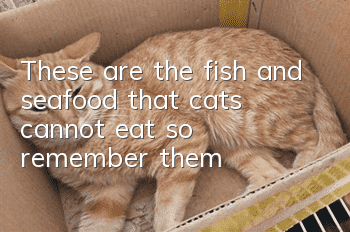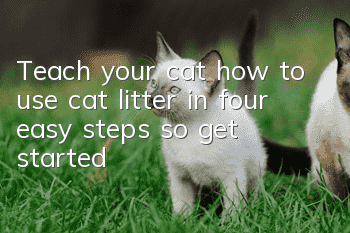These are the fish and seafood that cats cannot eat, so remember them!

Many people have the impression that "cats love to eat fish", and many cat owners will occasionally feed their cats boiled fish with vegetables. But in fact, not all fish are suitable for cats to eat! Some fish are even dangerous. Sexually, cat owners who want to give their cats full wet food or hand-made fresh food must be cautious!
Black fish (sardines, saury, mackerel, amberjack)
Mackerel, saury, sardines, amberjack and other fish with blue backs are collectively called blue carp by the Japanese. Blackfish is rich in unsaturated fatty acids. The DHA and EPA in it have the effect of preventing high blood pressure and are very helpful for health and beauty, so they are also favored by everyone.
However, when unsaturated fatty acids are decomposed, a large amount of vitamin E is consumed. If a cat only eats herring, vitamin E will be insufficient, causing the fat to turn into yellow "yellow fat syndrome"! In addition to causing the cat's subcutaneous In addition to the fat turning yellow-brown, symptoms such as fever, reduced activity, and pain when touched may also occur.
However, with the popularization of cat food, it is now rare for cats to suffer from yellow fat syndrome. As long as owners are careful not to let their cats eat only herring, and pay a little attention when preparing fresh food, they don’t have to worry too much. Oh!
Do not eat octopus, flower branches, crabs, shrimps, clams, etc. raw
Raw flower branches and clams contain a large amount of thiamine enzyme. This enzyme will break down vitamin B1, and vitamin B1 is a very important nutrient for cats. Therefore, if these seafood containing thiamine enzyme are eaten raw, the cat will be harmed. Suffering from vitamin B1 deficiency.
Vitamin B1 deficiency in cats is similar to beriberi in humans. In addition to being unable to walk, there will also be symptoms such as loss of appetite, vomiting and so on. This is where the Japanese folk saying - "A cat cannot walk after eating flower branches" comes from.
Abalone and snails
In the midgut glands of abalone and snails, pyropheophorbide, a chlorophyll derivative produced after digesting seaweed, accumulates. If the animal accidentally ingests this light-sensitive toxin during eating, it will be affected by the light. Under the action, it will cause inflammation, redness, swelling and itching of the skin, and this poisoning phenomenon is also called photosensitivity. Especially for ears, because they are easily exposed to the sun and the skin is relatively thin, more serious symptoms often occur. , there may even be the possibility of necrosis.
Things that people should be careful about, cats should also be careful about
When humans eat undercooked or stale seafood, they may be infected with marine parasites, and the same goes for cats! When feeding seafood to cats, pay attention to the freshness and make sure it is cooked well. In addition, when feeding fish, be sure to pick out the fish bones. It is wrong to think that cats will pick out fish bones on their own. Many domestic cats today grew up eating canned dry food. They do not know how to pick out fish bones at all. Therefore, as an owner, Please be sure to take care of your cat so that the fish sting will not hurt the cat.Mi oh!
Diseases such as yellow fat disease and vitamin B1 deficiency are caused by a partial eclipse and excessive intake of a single fish species. If you only feed your cat once in a while, there is no need to worry. As for photo allergy, you only need to clean and cook the midgut glands of abalone and snails; but be careful not to let cats eat the discarded midgut glands when digging through kitchen waste! In short, give cats fish Beforehand, remember to do your homework first, so as not to cause problems for your cat to eat!
- Cat cold and fever symptoms and treatments
- Cats can eat less and more frequently to lose weight
- The cat kept opening its mouth and panting in the car
- How to train a cat to use cat litter? What principles should be followed?
- How to stop cats from causing damage to the home, and how to train cats not to scratch the furniture?
- Will cats need to be quarantined for life if they have nasal congestion? Cat owners should pay special attention!
- Cat personality analysis, you can tell who owns what kind of cat
- How to tell if a Ragdoll cat is pregnant
- How to get rid of the odor where your cat peed
- Can cats eat spider plant leaves?



